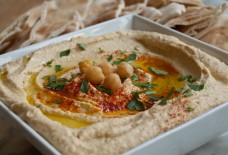Dresses of the Arab World
posted on: Aug 1, 2016
BY: Clara Ana Ruplinger/Contributing Writer
Women’s dress in the Arab World is stylish and diverse, with cultural heritage that is long and unique. Some outfits, like the Abaya and Thawb, are quite common, but have many different regional expressions. Other outfits are highly unique, depending on the country they come from. Embroidery and craftsmanship is a key component of most Arab dresses, and a highly prized component of Arab culture.
Explore the Arab world’s many styles of dress in the slideshow below, and take a journey through centuries old traditions contributing to the wealth of Arab heritage.
-
Morocco
On the edge of the Arab world, Morocco has a very distinctive style. A traditional Arab dress you will see there is the kaftan, a colorful tunic with long sleeves. The kaftan is embroidered and comes in many colors.
-
Tunisia
In a country with strong Western influence, it is harder to catch sight of the traditional dresses, but not impossible. The sefsari, a long white veil, is common in more rural areas. Also popular are the blouza and fouta, a matching embroidered blouse and skirt, often worn as a wedding gown.
-
Algeria
In Algeria, the karakou is a traditional embroidered jacket that is extremely popular on weddings and special occasions.
-
Libya
Courtesy of 500px.com
Sometimes called sudra, this elaborate outfit is often worn by married women. It includes drawstring pants, a khemise with embroidered arms, a vest with gold buttons, a striped cloth that is wrapped and draped over one arm, and a matching head wrap. Ample amounts of gold jewelry are used as decoration.
-
Egypt
In Egypt, women can be seen wearing the gallabya, a long tunic with no buttons or proper neck. Worn by both genders, it is usually made more colorful for women.
-
Jordan
Thawbs and abayas adorned with a red embroidered torso and cuffs are quite common in Jordan. Red is a national color, often seen in the country’s keffiyah, but many other colors of embroidery exist as well.
-
Iraq
For Iraq, a unique dress is the hashmiyah, which is adorned around the neck and waist with metallic thread and sometimes jewels, it is used for ceremonies. Other than this, variations of the abaya and thobe are quite popular.
-
Palestine
Courtesy of fashionlady.in
Palestine traditional clothes bear much resemblance to Jordan’s, with a heavy focus on embroidery. Each major village in Palestine is represented through distinct embroidery styles and colors.
-
Lebanon
Courtesy of fashioan.blogspot.com
Unlike what was described previously, in Lebanon dresses are shorter, but worn with pants called Sherwal underneath. However, in the cities, it is much more common to wear modern Western fashion.
-
Syria
Courtesy of pinterest.com
In Syria, the thawb is also popular for women. It is typically dyed black and red, and accompanied by a belt of the same color.
-
Saudi Arabia
Courtesy of non-westernhistoricalfashion.tumblr.com
When most people think of clothing and women in Saudi Arabia, they usually think of a woman dressed in black abaya and niqab, but the variety of traditional dress in this kingdom is much more diverse than that. For instance, this beautiful purple and gold thobe nashal is emblematic of the najd and central region of the country.
-
Qatar
In Qatar, women wear the djelabia, which is a local version of the kaftan. It is usually donned during holidays like Ramadan.
-
Kuwait
Courtesy of costumehistoryisfun.blogspot.com
In Kuwait, women wear the darra’a (dress) beneath the thoub (overdress). The green and gold dress you see here is for weddings.
-
Bahrain
Courtesy of flickr.com
For special occasions in Bahrain, women wear a red dress with golden embroidery.
-
United Arab Emirates
In the Emirates, women usually wear abayas that often are decorated with sequins and embroidery, although Emirati and Gulf abayas differ from those in the Levant, with decoration usually being more subtle.
-
Oman
Courtesy of glamourgrannytravels.com
The main part of women’s clothing is a thawb embroidered with geometric and flower shaped patterns that is worn over trousers (sirwal) and a headdress.
-
Yemen
Courtesy of hijabistas.net
The balto is the Yemeni version of the abaya, and the litma is the Yemeni version of the niqab. The sana’ani, now only worn by older generations, is a colorful piece of cloth which covers women from head to toe.
-
Sudan
Courtesy of istizada.com
In Sudan, a thobe that is different from those worn in the Levant a popular dress among women. It is essentially a large piece of fabric that comes in many colors and designs, and is wrapped all around the body and head.



